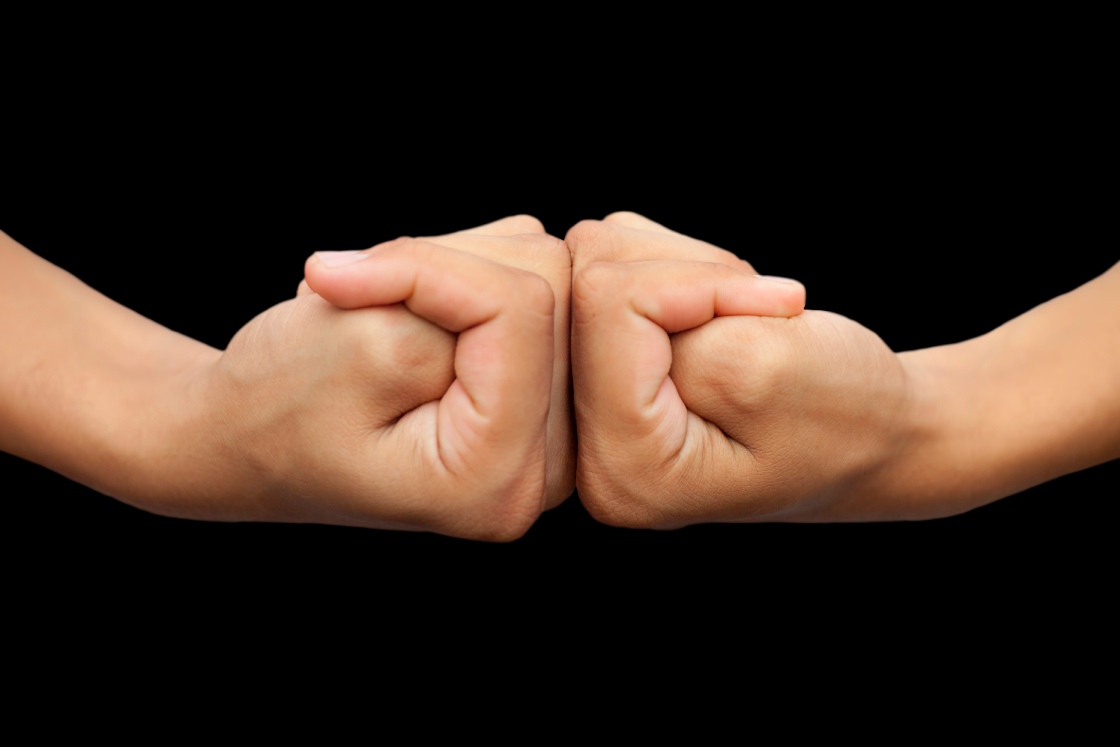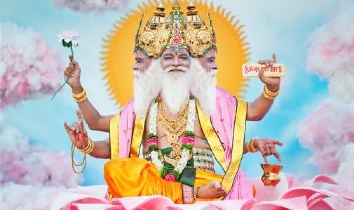
Brahma Mudra is a powerful hand gesture in yoga, named after Brahma, the Hindu deity known as the creator of the universe. This mudra involves specific hand and head movements that help balance the five elements air, fire, ether, earth, and water inside your body. By harmonising these elements, Brahma Mudra promotes physical and mental balance, making it a valuable practice in yoga and meditation.
Even though Brahma Mudra might look simple, it has a deep effect on focus and healing. It’s suitable for everyone, from beginners to advanced practitioners. Regular practice of Brahma Mudra can help ease neck and shoulder pain, improve memory and vision, and bring a strong sense of inner calm and balance.
Meaning & Philosophy
Brahma Mudra is named after Brahma, the Hindu creator god. In Sanskrit, “Brahma” translates to “divine,” “sacred,” or “Supreme Spirit,” while “Mudra” means “gesture” or “seal.” This mudra combines two types of hand gestures.
- Hasta Mudra involves specific hand and finger movements, similar to Adi Mudra.
- Manas Mudra includes rotary movements of the head.
Combining these movements, Brahma Mudra is integrated into pranayama breathing and meditation techniques. It serves as a comprehensive practice for healing various parts of the body, including the eyes, neck, mind, spine, throat, shoulders, and the hypothalamus and thyroid glands in the throat chakra.
Brahma Mudra is also known as “Poorna Mudra,” meaning “full” or “complete.” This name highlights its effectiveness in expelling air from the abdomen during exhalation. By pressing the fists made with both hands against the Manipura chakra (navel), this mudra helps release excess gases from the abdomen, promoting internal balance and well-being.
Philosophy of performing brahma mudra

The Hindu god Brahma is said to have four heads (with one being invisible), representing his ability to observe in all four directions-North, East, West, and South.
In Brahma Mudra, the practitioner moves the head in these four directions while producing “Beeja” sounds (seed sounds) with each exhalation. The four seed sounds are “aaa,” “uuu,” “eee,” and “mmm,” which combine to create the vibration of “OM,” the sound of the universe.
Hence, the movement of the head in Brahma Mudra has two aspects:
- Psychological Aspect: By moving the head in all four directions during Brahma Mudra, the practitioner emulates Brahma’s quality of observing, hearing, and witnessing everything happening around them.
- Physical Aspect: The Beeja sounds produce healing vibrations that help align the mind and body. The combined movement of the hands, neck, and the sound brings the practitioner to a state of calm and centeredness.
Significance
- Channeling Prana: This mudra channels the movement of Prana throughout the entire body, similar to how Lord Brahma, the creator of the universe, infused the universe with Prana.
- Healing and Upliftment: Brahma Mudra is a powerful gesture that heals both the mind and body while uplifting the spirit. It channels divine energy, helping the body achieve its highest potential and fulfill its deepest needs, much like the creative force of Lord Brahma.
- Elevating Consciousness: This mudra aids in elevating consciousness, fostering a deeper awareness of one’s divine purpose and spiritual path. It helps practitioners connect more profoundly with their inner self and higher consciousness.
How to do brahma mudra(steps)
- Sit in a calm, open space on the floor (in Sukhasana, Padmasana, or Vajrasana) or on a chair.
- Place both thumbs at the base of the little fingers on each hand. Close your fists around your thumbs so the knuckles of your right fist touch the knuckles of your left fist. Bring your fists close to your navel.
- As you exhale, press your fists against your abdomen. On inhalation, let your abdomen expand naturally.
- Move your head:
- Right: Turn slowly to the right for a count of five (1-2-3-4-5). Align your neck with your right shoulder. Breathe in and make the sound “aaa” while returning to the center for a count of five.
- Left: Turn slowly to the left, making the sound “ooo.”
- Up: Tilt your head upwards for a count of five. Breathe in and make the sound “eee” while returning to the center for a count of five.
- Down: Lower your head, pointing your chin down for a count of five. Breathe out and make the sound “mmm” while bringing your head back to the center for a count of five.
- Repeat the sequence 5 to 9 times: Right with “aaa,” Left with “ooo,” Up with “eee,” Down with “mmm.”
Focus on the sensations in your neck and spine, and feel the cumulative sound of “OM” in your head region.
Additional Tips
Brahma Mudra incorporates all the “Beeja sounds,” similar to the Brahma Mantra. At the end of your practice, you can enhance your session by chanting the Brahma Mantra while holding the Brahma Mudra:
Om Aim Hrim Shrim Klim Sauh Sat Chit Ekam Brahma
Time & duration
- Ideal Time: Early morning on an empty stomach or before meals is best for Brahma Mudra.
- Duration: Practice for 5 to 10 minutes, ideally 2 to 3 times daily.
Precautions
- Perform movements and sounds gently, without straining your neck or head.
- Avoid practicing Brahma Mudra right after consuming food.
- Breathe deeply and steadily, avoiding breath-holding or irregular breathing.
- Sit in a stable and comfortable position, avoiding any strain or discomfort.
- Begin slowly and increase practice duration and intensity gradually.
Contraindications
- Do not practice if you have recently injured your neck or back or undergone surgery.
- Avoid if you have uncontrolled high blood pressure, as head movements might exacerbate the condition.
- Refrain from practicing during severe headaches or migraines, as the movements might worsen symptoms.
- Be cautious during pregnancy, especially in the later stages, due to the potential strain on the body.
- Stop if you feel dizzy or lightheaded during practice.
Benefits of brahma mudra
Brahma Mudra provides notable benefits for both physical and mental health. It effectively supports neck and spine health, reduces stress, and enhances mental clarity. Combining specific hand and head movements with breath control, Brahma Mudra helps balance energy flow, release excess gases, and cultivate a deep sense of calm. Regular practice can improve flexibility, boost concentration, and foster overall harmony in daily life.
- Relieves Neck Tension: Brahma Mudra can help relieve neck pain by gently stretching and moving the neck. The practice involves slow, controlled head movements that ease stiffness and reduce tension. This is especially helpful for people with chronic neck pain or poor posture. By regularly performing Brahma Mudra, you can improve neck flexibility and reduce discomfort.
- Enhances Mental Clarity: The practice involves specific breathing techniques and sound vibrations, which can sharpen focus and enhance mental clarity. This mental engagement promotes a sense of calm and reduces mental fatigue.
- Balances Energy Flow: By harmonizing the five elements within the body through hand and head movements, Brahma Mudra supports a balanced flow of energy, which can improve overall well-being and vitality.
- Promotes Emotional Stability: Brahma Mudra can enhance emotional stability by calming the mind and managing stress. Regular practice balances feelings and reduces mood swings. The combination of hand and head movements with controlled breathing fosters relaxation and mental balance, making it easier to handle stress and stay calm.
- Supports Digestive Health: Pressing the fists against the abdomen helps in releasing excess gases and improving digestion, which supports a healthier digestive system.
Conclusion
Brahma Mudra is a valuable practice that combines hand and head movements with breath control to improve both body and mind. Named after the Hindu god Brahma, it supports neck and spine health, reduces stress, and boosts mental clarity. This mudra helps balance energy, release excess gases, and create a sense of calm. Practicing Brahma Mudra regularly can enhance flexibility, focus, and overall harmony in your daily life, leading to a more balanced and peaceful state.

